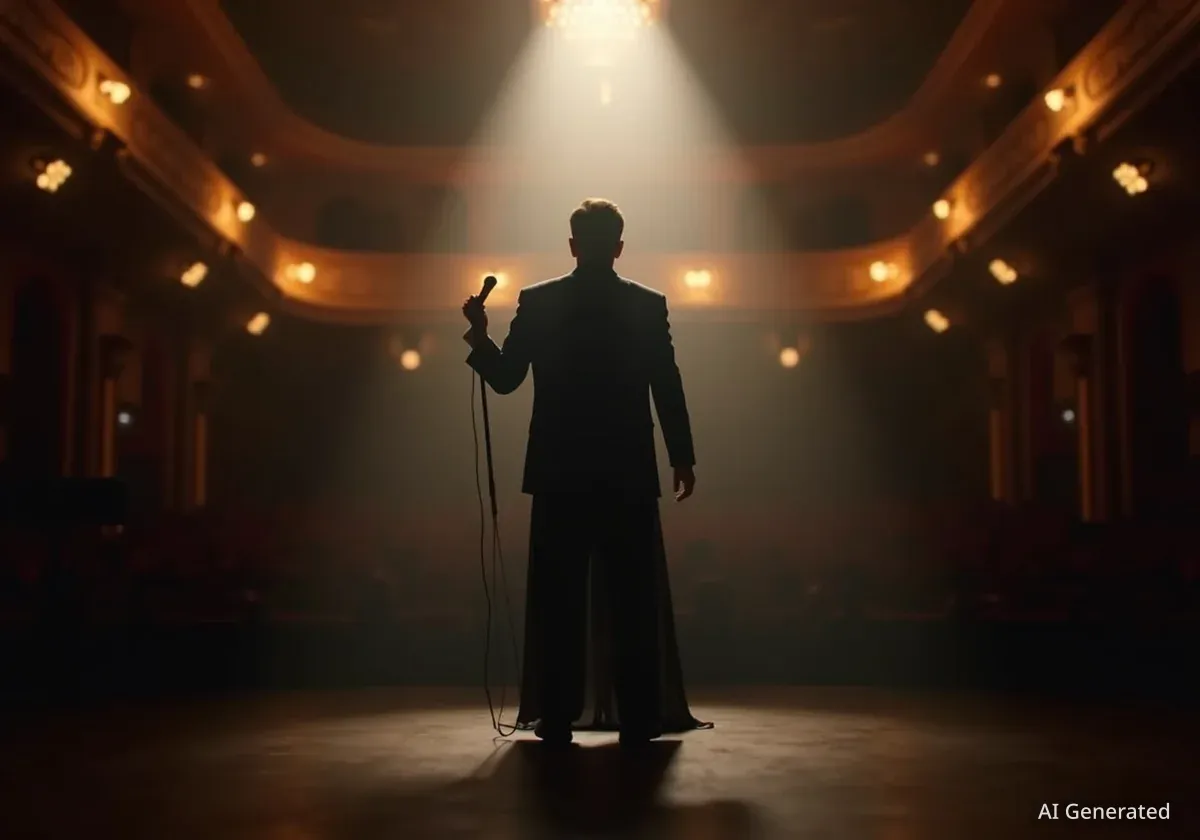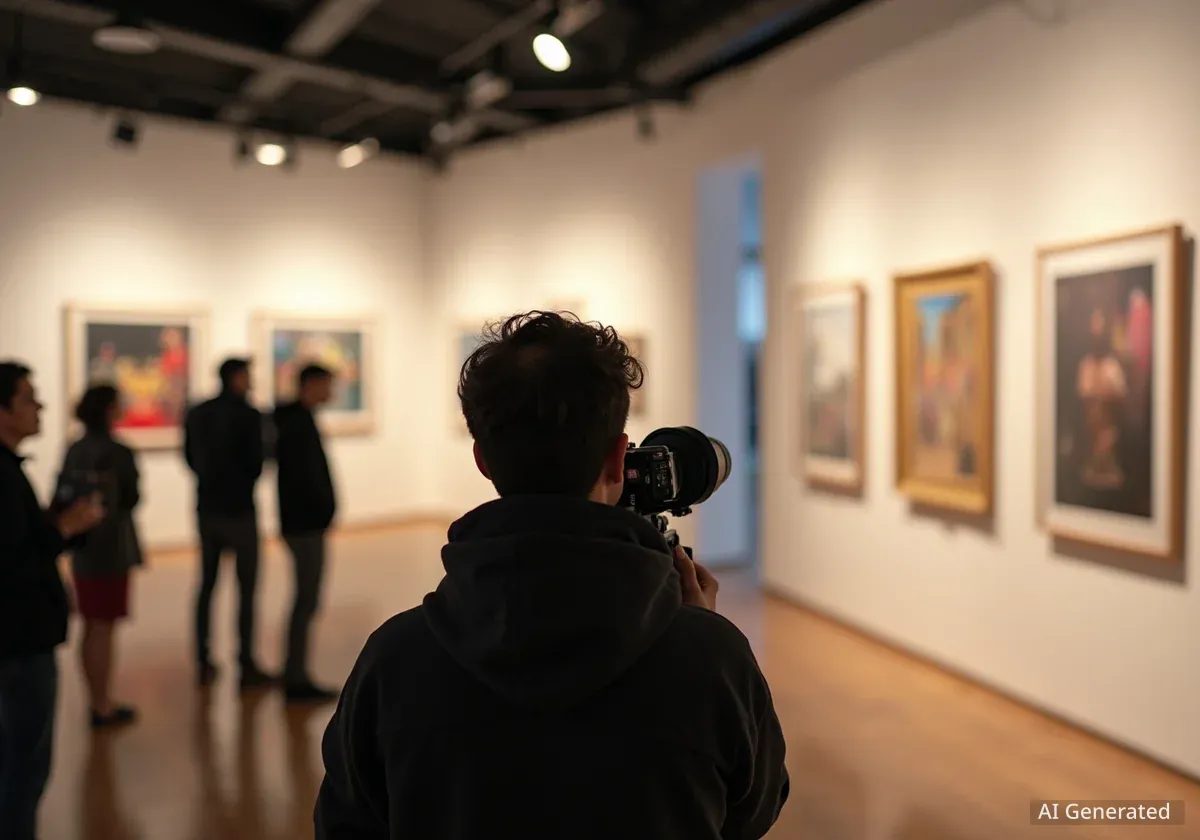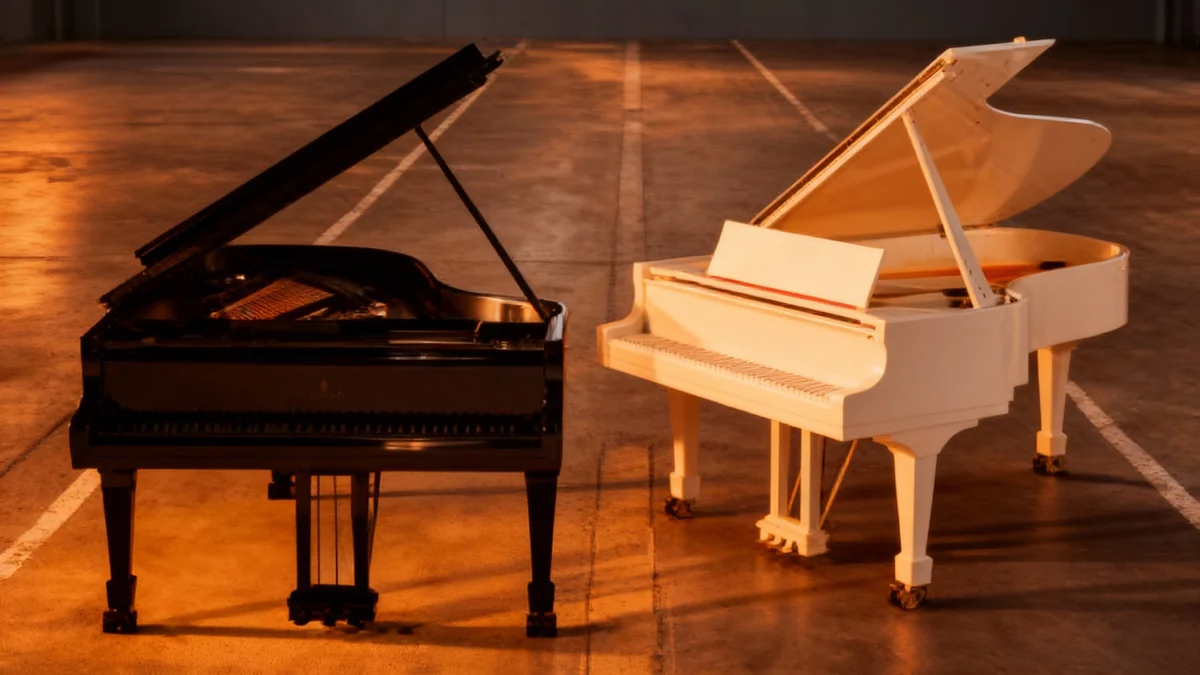The Fondation Cartier pour l’art contemporain has officially opened its new, expansive home in Paris, transforming a historic former shopping mall near the Louvre into a dynamic cultural hub. The new museum, which opened its doors on October 25, provides more than five times the exhibition space of its previous location and features an innovative, adaptable design by Pritzker Prize-winning architect Jean Nouvel.
Located in a grand Haussmannian building on the Place du Palais-Royal, the institution now occupies nearly 70,000 square feet. This move marks a significant expansion for the foundation, which has operated for over four decades, and places it at the center of the city's most prestigious cultural district.
Key Takeaways
- The Fondation Cartier has relocated to a former shopping mall on Paris's Place du Palais-Royal, opening on October 25.
- The new space offers nearly 70,000 square feet of exhibition area, a fivefold increase from its previous home.
- Architect Jean Nouvel designed a flexible interior with five large, mobile platforms that can reconfigure the entire space for each exhibition.
- The inaugural show, "Exposition Générale," features 500 works by 100 artists, highlighting the foundation's diverse collection.
A New Architectural Vision
The foundation once again commissioned architect Jean Nouvel, who designed its original glass building on the Left Bank in 1994. The long-standing relationship between the architect and the institution allowed for a bold approach to the new site.
Instead of replicating the transparency of the former building, Nouvel focused on creating an interior that is constantly in motion. Chris Dercon, the foundation's managing director, described the collaboration as ideal. "Jean Nouvel is our architect since 40 years," Dercon noted. "He’s part of the family of the Fondation Cartier."
"Rather than designing a fixed model, I wanted to create a living instrument, one that can adapt to continuously evolving projects."
Jean Nouvel, Architect
Nouvel explained that the heritage of the Haussmannian site required a different architectural language. His solution was to hollow out the vast interior and install a system of five large platforms, similar to elevators. These platforms can be moved vertically and horizontally, allowing curators to create entirely new layouts for every exhibition.
Dercon likens the system to a popular building toy. "Think about it like Lego," he said, explaining that it enables artists and curators "to create their own Jean Nouvel building every six months."
Space by the Numbers
- Exhibition Area: Nearly 70,000 square feet
- Increase in Size: Over 5 times larger than the previous location
- Mobile Platforms: 5 elevator-like structures
- Collection Size: Approximately 4,500 works
- Years of Operation: 41 years
Inaugural Exhibition and Collection Focus
The first exhibition in the new space is titled "Exposition Générale," a nod to the grand sales that once took place in French department stores. The show is similarly vast, presenting 500 works from 100 different artists and exploring themes of nature, design, and craftsmanship.
Highlights from the exhibition include:
- Postcolonial photography from Malian artist Malick Sidibé.
- A complex, large-scale installation by American artist Sarah Sze.
- An immersive nature soundscape created by musician and naturalist Bernie Krause.
- A vibrant reception hall, or salon de eventos, by Freddy Mamani, a leading figure in Neo-Andean architecture.
Dercon described Mamani's contribution as "very colorful" and "very Baroque," comparing it to a modern interpretation of a mestizo church in the Andes.
A Philosophy of 'In-Betweenness'
The Fondation Cartier has built its collection of roughly 4,500 works over 41 years by focusing on artists who often operate outside the mainstream art market. According to Chris Dercon, the foundation's interests are very different from encyclopedic institutions like the nearby Louvre. "I always say that we are interested in in-betweenness—in between the disciplines," he stated. The foundation encourages collaboration between artists, curators, and thinkers across different genres.
This approach has allowed the foundation to amass a unique collection that champions artists who may not regularly appear at major auctions or in mega-galleries. The new, larger space provides an unprecedented opportunity to showcase the depth and breadth of this collection.
Joining a Cultural Epicenter
The foundation's new location places it in direct conversation with some of Paris's most important cultural landmarks. It sits directly across from the Louvre and is just a short walk from the Bourse de Commerce, which houses the Pinault Collection, and other institutions like the Musée des Arts décoratifs and the Jeu de Paume.
Despite this proximity, Dercon emphasized a desire to avoid creating a sterile "museum mile." He pointed out that the building is part of a mixed-use complex with offices located on the upper floors. This integration is intentional.
"It’s good not to create a museum mile, not to have something which at night is going to feel like a mausoleum," Dercon explained. The goal is for the foundation to be an active part of a living neighborhood, contributing to a vibrant dialogue with its historic and contemporary neighbors.
The move represents a new chapter for the Fondation Cartier, one defined by architectural innovation, expanded capacity, and a deeper integration into the cultural fabric of Paris. With its dynamic new home, the foundation is poised to offer an ever-changing experience for visitors and a versatile platform for the artists it supports.




